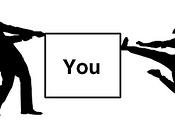Models are often used to describe scientific reasons for economic behavior. There are several different models which help people to understand economics. The first of which is a chart. Charts can be used to represent statistics. This data is presented in a visual format so as to create an easy visual to coincide with empirical data. A good example of a chart is a pie chart. This is a circular model which is divided into sections or slices which show the amount of information supporting one or more areas relating to a single topic. Another model which demonstrates economic behavior is a graph. Graphs are often fashioned into a line, column, or bar format. A line graph, with the values of the variable measured on the vertical axis and the years shown on the horizontal axis, is called a time series (Mings, 21). Line graphs are especially useful for measuring quantities over a period of years.
Column graphs are similar to line graphs, because they measure an amount over a number of years. However, column graphs also compare more than one variable at a time. Simply put, bar graphs are column graphs that have been turned over on their side. The bars which represent statistics reach outward to the right, instead of upwards, like the column graphs.
Another model which is used to better understand the science behind economics is the analytical diagram. This is also a visually simulating model which helps to explain direct and indirect relationships. An analytical diagram is also employed to help describe
inverse relationships. This is directly related to the basic analytical diagram of the Production Possibilities Curve. The Production Possibilities Curve is an excellent example because it demonstrates how an increasing focus on production of one specific material can reduce the production...


